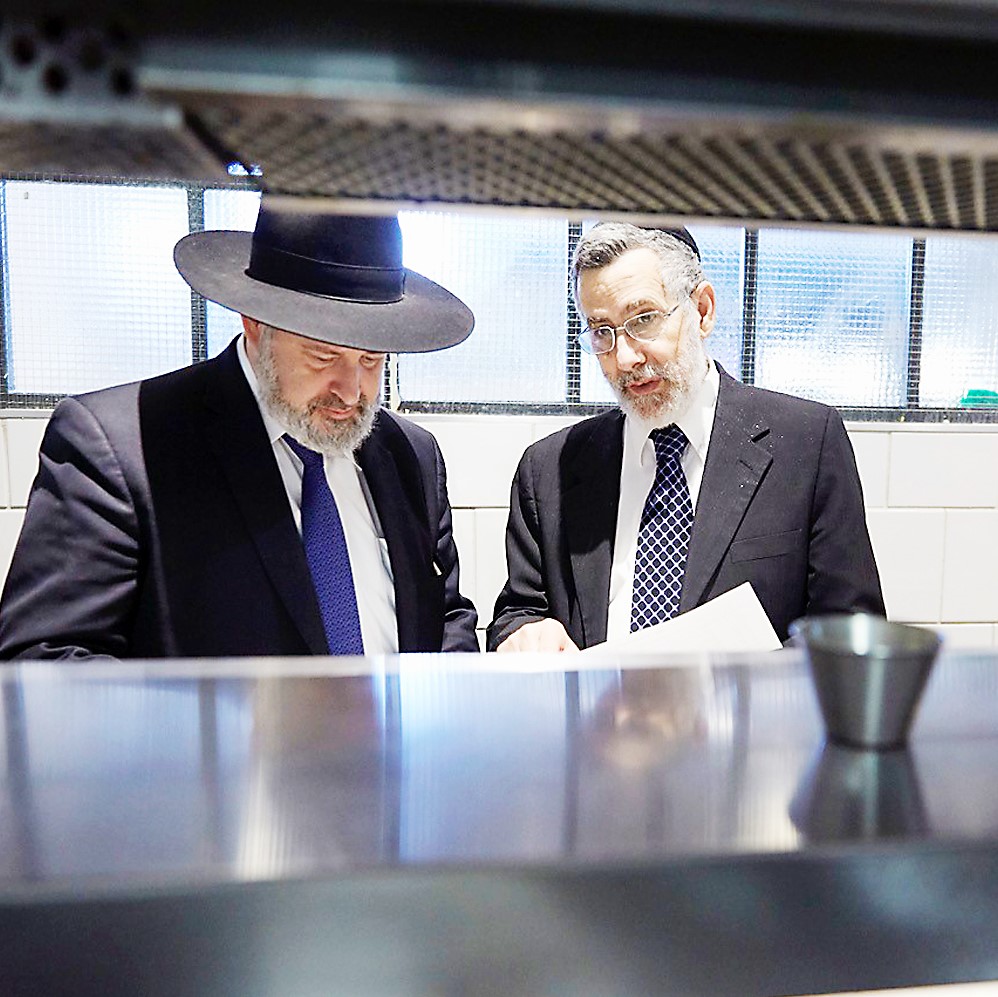click to dowload our latest edition
CLICK HERE TO SUBSCRIBE TO OUR NEWSLETTER


Published
4 years agoon
By
adminJORDAN MOSHE
According to head of the kashrut department Rabbi Dovi Goldstein, the department has made significant changes and improvements.
In the wake of the crisis, the Beth Din called on international experts from the Association of Kashrus Organisations (AKO) to come to Johannesburg (in May 2018) to give guidance. Rabbi Menachem Genack, Rabbi Moshe Elefant, and Rabbi Sholem Fishbane inspected and compiled a comprehensive report with guidelines the following month.
Goldstein said that not only had most of the recommendations been implemented, but the relationship between the AKO and the kashrut department had never been better.
“The AKO is happy with the progress we’ve made, and our membership as a fully-accredited AKO member remains intact. It’s fully behind us.”
Goldstein says there were 31 recommendations in total, two of which were ruled out on the basis of feasibility. “We investigated them thoroughly,” he said. “One involved tracking kosher meat using the DNA method. It was very exciting – no organisation anywhere in the world is doing it.”
Unfortunately, the cost proved prohibitive. “It would make kosher meat unaffordable if we put the method into use. One would have to test each animal being slaughtered at source, and then subsequently at a kosher establishment. We’re sensitive to cost, and with meat and chicken being our highest, it wasn’t something we could pursue.”
Also related to slaughter, the second recommendation that was ruled out involved monitoring quantities of meat leaving the abattoir and cross-referencing the figures with those of meat arriving at kosher establishments.
Nevertheless, 22 recommendations have been completed, with the remaining seven in progress. Goldstein outlined progress in relation to each of them, stressing that the remaining items would be completed within the next six months. Four of these relate to vegetable checking.
“The first recommendation involved hiring a trained expert to focus on insect inspection,” he says. “Over the past year, we’ve trained a vegetable specialist who has been on the ground checking vegetables. His focus will be on understanding infestation rates and, in collaboration with global kashrut authorities, developing the best checking methods.”
This expert will also be the primary trainer of mashgichim (kashrut supervisors) in using these new methods.
Additionally, much time has already been invested in training mashgichim more broadly, with a completely new course developed and implemented last year. Close to 100 local mashgichim have been involved, individually going through four sessions each.
“They went through a session on professionalism given by me, two sessions on kashrut with Rabbi [Motti] Groner, and a session in food safety,” says Goldstein. “We’ve put a lot of time into our mashgichim and held a conference with them during the year to cover new kashrut methods and other relevant points.”
The Kosher Institute of America (KIA) has also released its own mashgiach training course, involving eight hours of training online, and this will become a compulsory part of the Johannesburg Beth Din’s mashgiach training.
Another important recommendation was the installation of CCTV cameras at every kosher establishment, with live access granted to the kashrut department. He says the solution being developed goes beyond AKO’s minimum recommendation, and has the potential to revolutionise kashrut in South Africa.
“As far as we’re aware, no kosher authority in the world has full CCTV coverage of its domain,” says Goldstein. “However, we’ve got fifteen live feeds coming in already. New technology was unveiled in America last year which is capable of linking all the cameras onto a single system, recommended by AKO.”
“We’re pushing to complete the implementation and receive live footage from individual establishments within the year. It will become a requirement for all our establishments to have one.”
Currently employed only in security services, the powerful software uses artificial intelligence to monitor camera feeds. For kashrut, this will mean an automated monitoring system which can be used to flag any establishment irregularities, including movement after hours.
Other completed recommendations included maintaining a full repository of Beth Din policies, establishing an international acceptable hechsher (kosher product certification) list, and training rabbinic field representatives.
Recommendations concerning shchita (slaughter) have also been implemented. These include the separation of beef and lamb slaughter, and the establishment of systems regarding lung checks. Additional mashgichim who will assist with reinforcing the system have been installed, and a rabbinic co-ordinator who will drive efficiency in the slaughter process has been appointed. Moreover, the first local shchita conference is scheduled to take place within the next few months, and should become an annual event.
Collectively, these improvements address all 22 of the AKO’s recommendations, even surpassing them in some instances.
“It’s important that the community understands that our connection with the AKO is better than ever before, and continues to grow,” says Goldstein. “I’m in regular contact with Rabbis Elefant, Genack, and Fishbane, and we work very closely. They provide advice on many aspects of running a complex kashrut organisation.
“We’ve worked hard, are committed to an open relationship with our community, and are encouraged by the progress we’ve made. We’re excited for the future, and strive to be a leader in the kosher space,” says Goldstein.
“We want to be at the height of kosher organisations worldwide,” he says.
